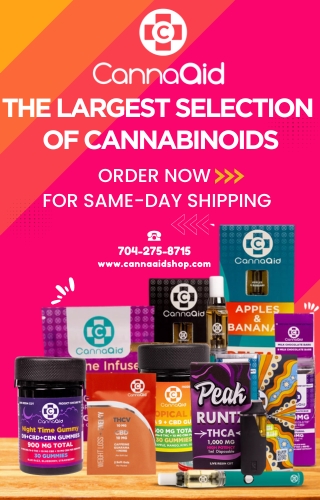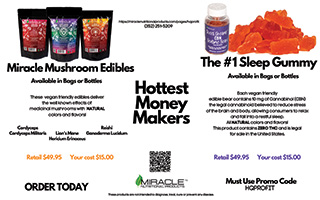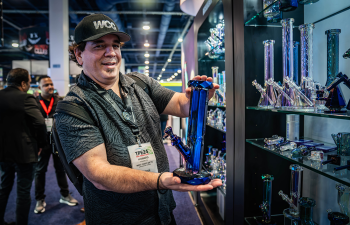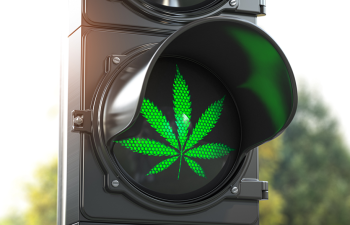Is the Legal Landscape Getting Better or Worse?
Our Sources Say ‘Yes’
The popular herbal supplement is close to a societal tipping point, thanks to renewed interest from lawmakers, but will its future be bright, dark, or confusing mixture of both?
It sounds like a hacky Seinfeld routine. “What’s the deal with kratom?” But that’s exactly the right question to be asking right now, as the industry is suffering the slings and arrows of an outrageous fortune.
News stories are linking the herb to sudden deaths. Lawmakers are increasingly restricting how it’s bought and sold. Regulatory bodies are urging consumers to steer clear. And the science, which was supposed to save the industry, feels stalled.
At the same time, millions of Americans are stirring kratom powder into their morning coffees, popping kratom-filled gel caps, and buying kratom-enhanced drinks by the case. Users credit the herb with helping them kick opioid addictions, easing pain, and enhancing focus, as well as general life quality. On the backs of those claims, the industry has become a bona fide cash cow.
To further muddy the issue, kratom causes cases of strange bedfellows. Pro- and anti-kratom groups are often aligned on their legislative wish lists, with leaders from both sides begging representatives to push for tougher federal regulations, age-restrictions for buyers, and more funding for research.
This is all part of the paradox that is kratom. It’s a stimulant and a depressant, a cure for addiction and possibly an addiction in itself; a substance that has been used for centuries but remains mysterious.
So, what is the deal with kratom? It helps to begin at the end.
The Great Kratom Death Conspiracy
You know the old saying about lies, damn lies, and statistics? That’s how Mac Haddow views media reports about deaths linked to the South Asian herb. Haddow serves as a senior fellow on public policy at the American Kratom Association, the industry’s largest advocacy group.
“The FDA tells people that you can die of a kratom overdose, but if you were to call them and ask them point blank, ‘What is the level of mitragynine in a person’s bloodstream that causes a fatality?’ they couldn’t tell you,” he said, referencing the active stimulant found in kratom. “That’s because no one has been able to identify it. Now, they will tell you that there should be concern above a certain level of mitragynine on a tox screen, and I don’t disagree with that. But none of them have even shown that there is a level at which a fatality occurs.”
Haddow pointed to a 2019 report from the Centers for Disease Control that investigated 152 drug overdoses of people who died with kratom in their system. Despite clearly noting that “postmortem toxicology testing detected multiple substances for almost all decedents” (emphasis ours), the study has been used to bolster anti-kratom arguments and prop up media reports that misleadingly cast kratom as a deadly substance, Haddow said.
And indeed, an internet search revealed that articles from several major news outlets seemed to misinterpret the findings. A typical story from CNN opened with a sentence claiming the report found that “kratom was a cause of death in nearly 100 people.”
But are such biases the result of overworked reporters entering into areas they don’t know much about—or signs of a plot to turn public perception against the industry?
Haddow was quick to note that in all but three of those deaths the CDC investigated, drugs like fentanyl or cocaine were found in the victims’ blood. Unfortunately, the CDC could not do further testing into the final three because they lacked access to those blood samples.
Even the National Institute on Drug Abuse largely agrees with Haddow’s take, writing on its website that “compared to deaths from other drugs, a very small number of deaths have been linked to kratom products and nearly all cases involved other drugs.”
Despite this, medical examiners and coroners across the country continue to tie overdose deaths to kratom usage. In a handful of cases, families of people who have died of apparent kratom overdoses (often taking more than 40 times the average recommended dosage) have sued kratom manufacturers. At least two have resulted in out-of-court settlements and a few are ongoing.
Haddow says kratom products can lead to deaths if they are tainted with other substances, like street drugs, or contaminated through with bacteria like e. coli. through poor storage or manufacturing practices—something he said would happen less if the FDA would regulate the industry.
Schrödinger’s Plant
Weighing all the evidence together, it seems clear that kratom is overwhelmingly safe. But, for many people, mostly safe is not safe enough. They want to know when does a dose go from being effective to dangerous.
The problem with effective dosing guidelines for users is that the human body quickly builds a tolerance to kratom. To get the same results, users need to take more of the substance or take strict breaks—two solutions that don’t come naturally to those using kratom to overcome opioid addictions.
Haddow acknowledges that kratom addiction can happen, although he claims it’s usually a psychological addiction like what can happen with cannabis, and that true physical addictions are “very rare.”
“It’s similar to a caffeine dependency, where if you stop cold turkey, you might have a week or two of upset stomach, runny nose, and a headache, then you’re done with it,” he said. “It’s not like with an opioid addiction, where you spend months, sometimes in an inpatient facility, to detox. And that’s the substantial difference.”
Puzzling out the future
The American Kratom Association estimates that more than 2,000 tons of the stuff finds its way from Southeast Asia to the United States every month, making it a billion-dollar industry. It’s hard to believe that snake oil could have that kind of economic benefit and user support. But that’s the line that many regulatory agencies have taken.
In 2016, the DEA tried to ban kratom, but kowtowed to a combination of Congressional and grassroots resistance. Two years later, the DHHS recommended that it be rated as a Schedule I drug, making it as illegal as heroin. The substance is banned in Alabama, Arkansas, Indiana, Rhode Island, Vermont, Wisconsin, and a few select municipalities, like San Diego. But most recent laws trend away from outright bans, and instead put limits on buying age.
Haddow claims government resistance arises from the FDA, which wants to be able to regulate kratom as a drug, instead of a health supplement. Until it gets its way, he said, the agency will continue to make it harder for the industry to get the help it needs to stop bad actors and fund research.
“We’ve given the FDA 75 documented reports of kratom manufacturers who are using illegal marketing claims, meaning they make therapeutic claims to market their kratom products, and there has not been a single prosecution,” Haddow said. “The FDA complains about people self-medicating with kratom to get off opioids. So, why the hell aren’t they doing their job, which is to clean up a marketplace where companies are using illegal marketing to induce consumers to use kratom for illegitimate purposes? This is just astounding to me. The lack of appropriate oversight by the FDA is a contributor to the problem about the disinformation on kratom.”
A regulatory agency that doesn’t want to regulate. An illegal drug that will kill you or set you free. Alabama and Vermont on the same side. Kratom is making the argument that the new normal could be more absurd, inconsistent, and puzzling than we thought possible—and that might be the scariest outcome of all.












